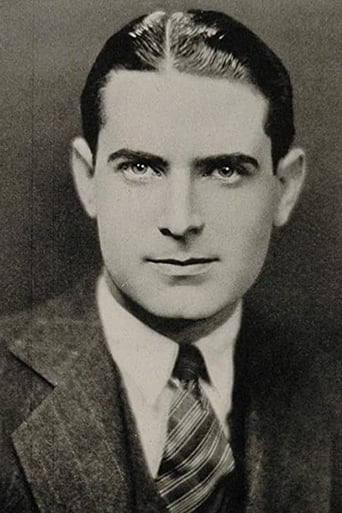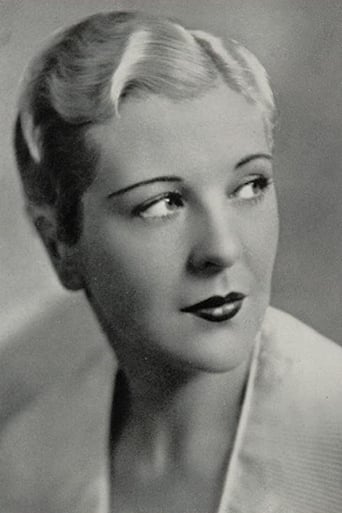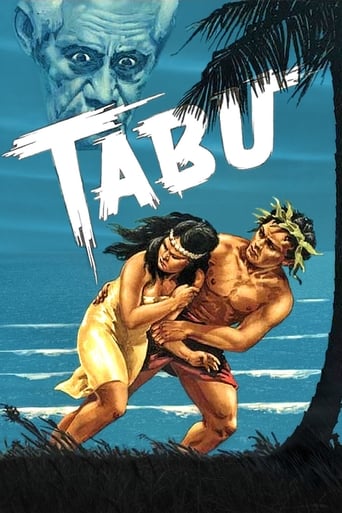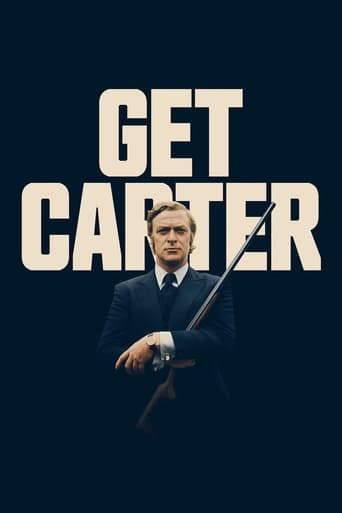

The Runaway Bride (1930)
Mary Gray elopes to Atlantic City, NJ, but begins having second thoughts about the marriage. Then she becomes inexplicably locked in her hotel room, and a series of cops, robbers and kidnappers passes through. Desperate, Mary trusts the shifty chambermaid Clara who whisks her away to the mansion of wealthy George Blaine. There, Mary must pretend to be a lowly cook, but that seems better than sticking with the guy she was engaged to.
Watch Trailer
Cast


Similar titles
Reviews
I love this movie so much
Lack of good storyline.
best movie i've ever seen.
The movie's neither hopeful in contrived ways, nor hopeless in different contrived ways. Somehow it manages to be wonderful
Yes, the movie is awful, but there are some redeeming features, and it almost makes it into the "so bad, its good" category. I suspect that this was supposed to be a breezy screwball-comedy, crime-mystery picture. The comedy falls flat and there are too many jumps in the script and jumps in character logic to make the crime-mystery satisfying. For example, why doesn't Mary Astor's character, Sally Fairchild,just use the fire escape to escape from the room that her runaway bridegroom has locked her in? Obviously the fire escape led down to the street as a criminal uses it to enter her room a few minutes later. The only reason seems to be that Sally couldn't escape from the room because then the criminal could not plant the diamonds on her to start the merry chase that the moves the rest of the plot forward. Then one wonders why Sally doesn't call the police when the criminal and another detective are shot in the room. Again, the answer seems to be, the movie would end right there after fifteen minutes, so she has to do the stupid thing and runaway. The screenwriter might reply that she's a runaway bride and that would be scandalous and disgraceful if the police found out. True, but she should be intelligent enough to figure out that being accused of murder trumps being accused of being a runaway bride. When she confesses to handsome Lloyd Hughes (the Lost World, 1925), "Mr Blaine, I've gotten myself into a mess," it is almost as if she's confessing to the audience how she feels about the movie she's appearing in. The most redeeming feature and the reason to watch the movie is Mary Astor's wonderful performance. It is so sincere and she looks so beautiful and distressed throughout that you want to rush in and comfort her. It is an "A" performance in a throwaway "B" picture. We feel angry that the script and other characters are not being as sincere as Miss Astor. You feel as if her talents are being ignored and wasted. Thank goodness for John Huston and "the Maltese Falcon," otherwise modern audiences would not have appreciated Mary.As mentioned by another reviewer, the cinematography is also quite good. It is another element that makes us sad that the script is so lightweight. Leo Tover was only 28 at the time. He would become one of the great cinematographers in Hollywood. He was nominated twice for an Oscar, but sadly, never won. "the Heiress," "the Day the Earth Stood Still," and "Love Me Tender" are some of his most well known works.I would also note that Paul Hurst seems very comfortable playing a police sergeant. He played a detective or cop in about 20 other movies, although he was most famous for playing in Westerns. In summary, this is a cheap, frustrating, throwaway movie, but not an uninteresting one.
Mary Astor is "The Runaway Bride" in this early talkie directed by Donald Crisp - and not very well, I might add. The young and beautiful Astor is Mary Gray, who is eloping with her fiancée (David Newell). He drives too fast, is wealthy, and doesn't want to work. Mary wants a husband who will make something of himself. For unexplained reasons, Mary doesn't seem to realize what this man is like until they elope.Mary breaks off the engagement, and he leaves the suite they've rented to make arrangements for the wedding because he's determined to marry her. While he's gone, a robber enters her room and, unbeknownst to her, hides $80,000 worth of stolen pearls in her purse. He's killed by someone else, and then the police show up. With the help of a maid, Mary makes a run for it and winds up as a cook in the home of a wealthy bachelor (Lloyd Hughes). But the gang still wants their pearls.Convoluted and directed in a meandering fashion, this film suffers from ETS (early talkie syndrome). The dialogue is said slowly, with pauses in between, throwing the rhythm of the film off. I just saw "Paid" from around the same time, and for some reason, that film doesn't suffer from this. But so many early talkies do, with the actors not used to speaking.Dated, draggy, and predictable, this film is only worth seeing for Astor, who in spite of the problems, manages to do quite well. Actually the performances aren't bad. But the story! Ouch.
Wealthy young Mary Astor (as Mary Gray) and tall playboy David Newell (as Richard "Dick" Mercer, Jr.) leave New York for Atlantic City, intending to elope. But, when Mr. Newell says he'd rather travel than work, Ms. Astor gets cold feet. Newell locks her in their hotel room, hoping a scandal about the couple running off and not marrying will make Astor change her mind. But, Astor prefers likewise attractive Lloyd Hughes (as George Edward Blaine), who is not only more responsible, but also rich.While Astor is locked in her hotel room, a jewel thief enters through the window and secretly stashes some pearls in her handbag. The thief dies in a shoot-out, while Astor screams. Then, lead thug Francis McDonald (as Barney Black) arrives, looking for the jewels, which are secretly stolen by moll and maid Natalie Moorhead (as Clara Muldoon). Local lawman Paul Hurst (as Daly) investigates. Astor is wanted by the police, then kidnapped and molested by thugs. Mr. Hughes must save her in time This thick-plotted "talkie" was directed by actor Donald Crisp, who did some impressive work with D.W. Griffith, Douglas Fairbanks, and Buster Keaton. Though a success directing silent films, Mr. Crisp decided to concentrate solely on acting, after turning in one all-talking film. This turned out remarkably well, in the long run. "The Runaway Bride" does have some good locations, featuring 1920s automobiles - those old tires wore out quickly. Astor has a fun rapport with Hughes and Newell.***** The Runaway Bride (5/4/30) Donald Crisp ~ Mary Astor, Lloyd Hughes, David Newell, Paul Hurst
...one, of course, is Mary Astor in a very early role that she handles quite well in spite of the fact that the plot, the direction, and all of her male costars are so wooden that you could probably build a small bonfire out of the lot of them. Mary's good girl looks and natural handling of dialogue cause her seem like the only thing three dimensional on the screen, with one exception.That exception would be the second reason to watch this film, and the only other female in the cast. For you precode fans out there, look really close at the frumpy seemingly dense Clara, the maid at the sea-side resort - that's Natalie Moorhead looking incredibly unglamorous considering all of her femme fatale appearances in movies like "The Office Wife".As for the rest of it all I can say is it is ponderously bad. The jist of the plot is that Mary (Mary Astor) is a society girl that has eloped with one of her society crowd only to find out that, after they have registered as man and wife in a seaside hotel but before they actually get married, that her potential husband seems to think that a man's place is in a deck chair - he has no desire to work at all. She changes her mind about the marriage. Her fiancé may be a lay-about but he apparently also has some caveman in him too. He locks her in the hotel room while he goes to find a minister, ignoring her wishes. While she is trying to find a way to escape, her room is invaded first by a mortally wounded jewel thief and then by the cops that think that Mary must be part of the gang that planned the caper.The police sergeant is a real bully and as for his police work, he makes Barney Fife look like Sherlock Holmes. He seems to really enjoy pushing around women when he isn't having trouble reciting his lines. When he comes across the real bad guys, he practically tips his hat to them - actually I think he does tip his hat to them.This is real tough sledding to get through, and only the performances of the two female players distinguish it. Stagey beyond belief and with acting technique left over from the silent era, I guess it's almost a toss-up as to whether or not it's worth your time.














